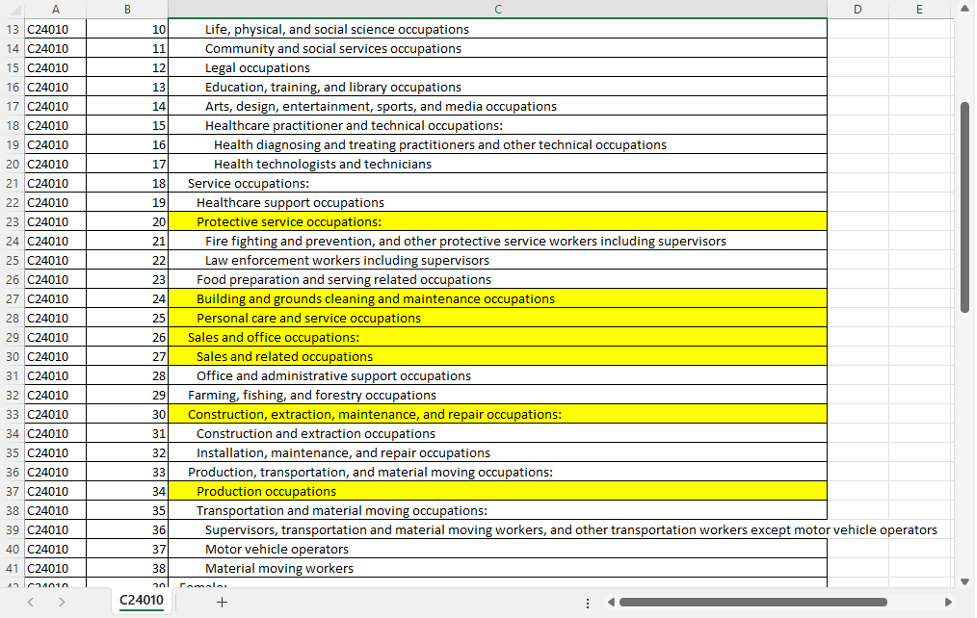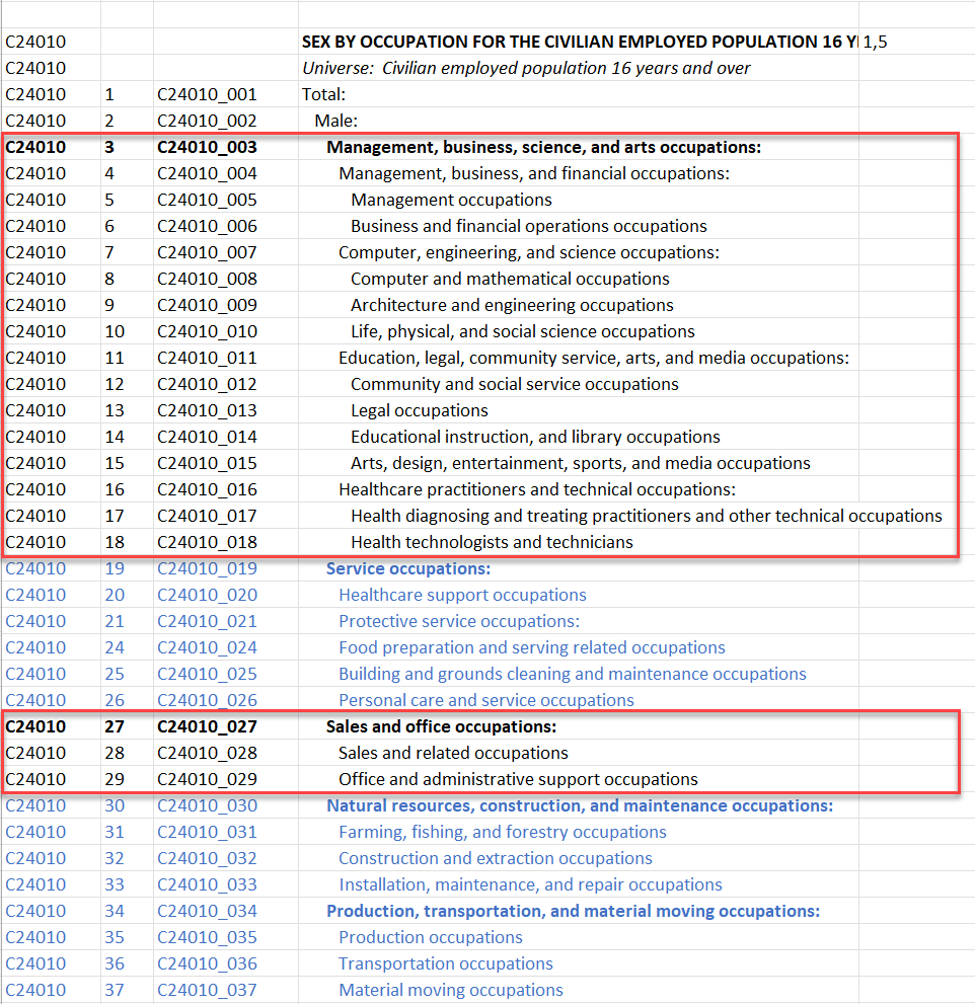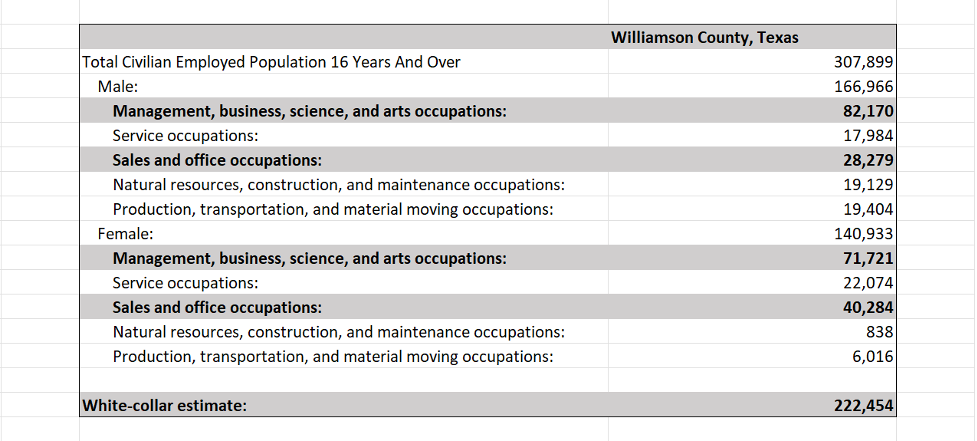Photo by Israel Andrade on Unsplash
Are you curious about the number of white-collar workers in your area? Well, I recently embarked on a journey to find white-collar worker categories from the Census Bureau, and let me tell you, it was quite the adventure! In this blog post, I’ll take you through my process of estimating white-collar workers using the American Community Survey and the key variables.
Not sure what the American Community Survey is? No problem! you can check out this handy FAQ on our website here: What is the American Community Survey?
Does the ACS Estimate White Collar Workers?
Not exactly. My search began on the official Census Bureau website, census.gov. The Census Bureau’s American Community Survey collects data on the industry and occupation of workers in the labor force. However, they do not include a specific table or variable to identify white-collar workers. It seemed like my quest for white-collar worker categories had hit a roadblock right out of the gate.
Identifying Key Variables
While I couldn’t find exactly what I needed on the Census website, I did explore the alternative avenue of the American Community Survey’s Users Group, the perfect place to connect with fellow data enthusiasts who might have the answers I was looking for.
Here I found this promising reply listing table C24010 and the variables that could be used to estimate a “working class”, and thus help me identify the variables needed to get a “white collar” estimate.

After I downloaded the full 2005 documentation for table C24010 to review the actual variable descriptions, it turned out that a lot of the variables did not align exactly with what was described. So this search for white-collar categories wasn’t over yet.

The Answer
Moving on, I instead looked through the most recent 2021 documentation. Now (using the most generous interpretation of what a white-collar job is), I decided to use these variables to estimate white-collar workers:
- Management, business, science, and arts occupations
- Sales and office occupations
If you wanted to estimate blue-collar workers, you could then use the variables for:
- Service occupations
- Natural resources, construction, and maintenance occupations
- Production, transportation, and material moving occupations

Using these categories, you can now estimate “white-collar” workers for your geography of choice. (*Remember to sum both male and female variables in the ACS table to get the total.)
As an example let’s look at Williamson County, TX. Williamson County has about 222,454 white-collar workers for 2021, making up about 72% of the employed population. Below you check out the highlighted variables used to get this total:

Where do these occupation categories come from?
For the occupation data, the Census Bureau uses the Standard Occupational Classification (SOC).
“The SOC is the federal government’s own regularly-updated system for classifying occupations, which are grouped according to the nature of the work performed. This system provides a mechanism for cross-referencing and aggregating occupation-related data collected by social and economic statistical reporting programs.”
Want to learn more about Census demographics, occupation data or anything else data-related?
We’re here to help. You can fill out the Custom Data Request form, or call us at 1-800-939-2130.
